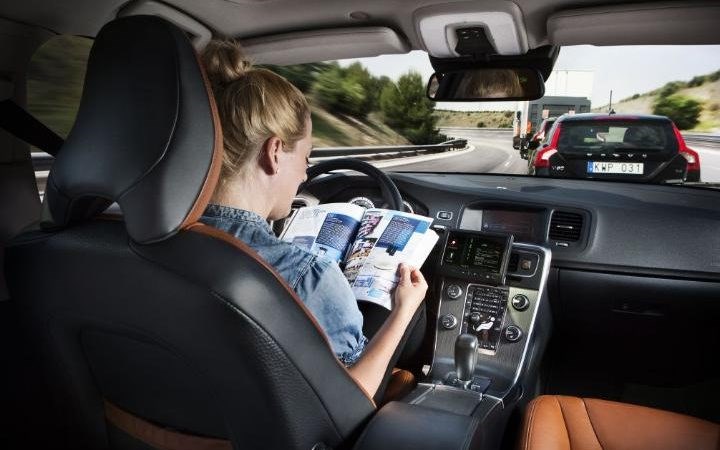
Monday Musing: The only thing automated vehicles demonstrate is that humans are really clever
Automated vehicles were hyped to be the next big thing, but where are they? Jo Audley takes a look...
I wrote about autonomous vehicles (AVs) in 2018 when there was a lot of hype and speculation. Hardly a day went by without an article on the latest developments or survey results on what people thought about them. At the time a Euro NCAP and Thatcham study reported that 71 percent of drivers thought AVs were already on the market – how wrong they were!
As a parking organisation, we had to consider how autonomous vehicles would change the way we use a car park or how parking spaces might need to change, or not, as the case may be. The benefits of partial autonomy such as assisted parking are undeniably welcome to someone who has experienced other people’s bad parking, but practice makes perfect they say and good parking comes with an added free bonus – that fuzzy feeling of satisfaction for personal achievement! It was not unreasonable to expect progress to total autonomy, but there was another problem. AVs were not yet fully knowledgeable of the rules of the road.
In order to navigate without you, an AV needs to learn the Highway Code, know every road marking and on-street sign. To add to the complexity, not all road markings that look the same mean the same, and many Traffic Regulation Orders are only written on paper. Consequently, we joined forces with the International Parking & Mobility Institute in America and the European Parking Association to create the Alliance for Parking Data Standards to produce a standard specification for vehicle parking and mobility data, which in March this year was formally adopted by the International Organization for Standardization (ISO).
The APDS has successfully achieved a global standard that far exceeds the needs of AVs and will benefit us more immediately in achieving integrated multi-modal journeys, make payments easier and reduce congestion, as well as many other benefits. AVs on the other hand have, according to the Guardian, got stuck in the slow lane during the same period.
In 2018, we reported the RAC Foundation’s joint study with the University of Nottingham entitled “How will drivers interact with the vehicles of the future?” The study focused on driver interaction with an AV using a simulator. It found that the more distracted a person was while the car was fully automated, such as reading a book and listening to music, it took them longer to regain control of the AV when it asked them to take over within a 10 second period. In fact, their driving was much worse after automation than it was before, both in terms of speed and lane changing on a motorway.
The focus is now on the capabilities of AI and how AVs perform without human intervention - apparently not so good either. It is probably not surprising to find that AVs perform better on motorways, the same as humans, but in urban areas struggle to fully stop at stop signs or unexpectedly put on the brakes. Machine-learning means ‘learning on the job’ so if it learns bad habits they will be ingrained forever and probably get worse.
In the Guardian, Melanie Mitchell, computer scientist and professor of complexity at the Santa Fe Institute said: “I think if every car was a self-driving car, and the roads were all mapped perfectly, and there were no pedestrians around, then self-driving cars would be very reliable and trustworthy. It’s just that there’s this whole ecosystem of humans and other cars driven by humans that AI just doesn’t have the intelligence yet to deal with.”
And will they ever?
Automated vehicles are not just cars either. Google produced this video of a self-driving bicycle in 2018:
OK, so now you’ve watched it you’ll know it’s just an April Fool joke. Or is it?
Where else but in China would you find the real thing. Huawei engineers actually built this self-driving bicycle. If you’ve got 10 minutes you can watch the video to find out how they did it, or just read the edited highlights.
You may, like me, have noticed it has a fundamental flaw and that is, it doesn’t look at what’s behind. As a cyclist, the thought of my bicycle swerving into the highway to avoid an obstacle like a car door or a pot hole putting me in the path of a vehicle trying to overtake sends shivers down my spine. Manned or not, that’s really not ideal for anyone.
And what about a self-driving motorbike, like this one by BMW showcased at CES in 2019?:
I personally can’t see much point to self-driving bicycles and motorbikes because the problems riders face are not reading the road, but poorly maintained roads, a lack of infrastructure, bad drivers and thoughtless pedestrians. Un-manned two-wheelers don’t solve these fundamental problems.
But despite the flaws, you can’t deny that it’s really clever stuff, just leave the driving to humans though eh?
Update: In the news today (20 April) it transpires that people will be able to watch TV in self-driving cars as long as they are ready to take control when needed, but there are still problems to be ironed out as you'd expect. Watch the video to see why.
